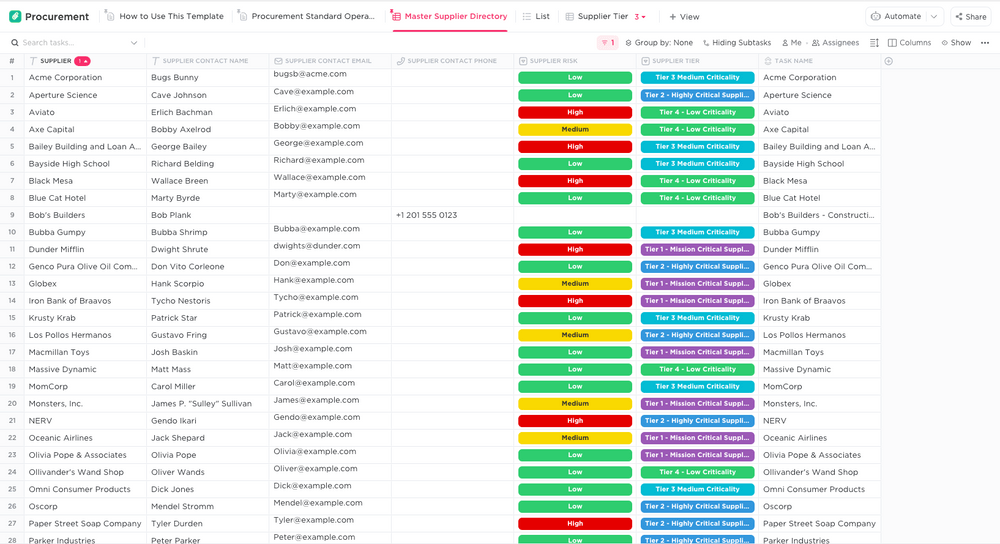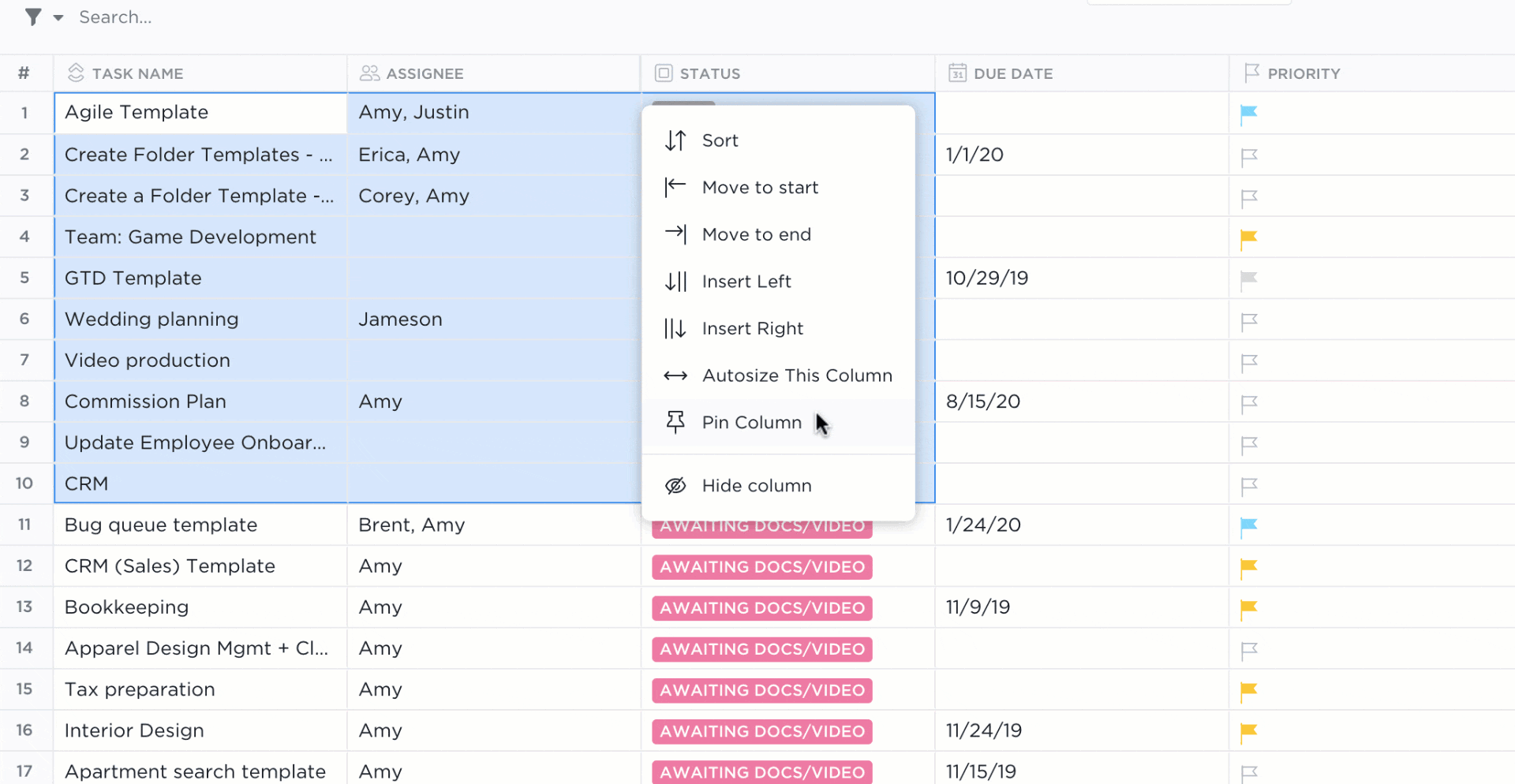How to Manage a SaaS Procurement Process

Sorry, there were no results found for “”
Sorry, there were no results found for “”
Sorry, there were no results found for “”
Traditionally, software buying was performed by procurement teams, who also bought everything else for the company, from coffee machines to hand tissues.
This was possible because buying software needed no specialized knowledge. There were only a handful of products in each category, and the pricing was simple.
The arrival of cloud technologies and Software-as-a-Service (SaaS) models has changed this dramatically.
Therefore, businesses need a customized procurement strategy that overcomes operational challenges, saves costs, and improves process efficiency in SaaS buying. Here’s how.
Choosing the right SaaS product isn’t just about picking a solution. It’s about ensuring that the right SaaS solution is bought at the right price, for the right people, with the right contract terms.
To achieve this, you need a thorough SaaS procurement process. It also helps to use a procurement management software on a tool like ClickUp, for complete visibility and control. Let’s see how.
Before going shopping for SaaS tools, identify what it is that you need. Here are a number of questions to ask your teams.
What is the product you are looking for? For example, it might be a SaaS solution for project management, data indexing, payroll management, etc. Remember to define this clearly.
For example, you might call a tool task management software, while the vendor might prefer virtual workspace. Knowing the difference is helpful in disambiguation.
Not all project management tools are created equal. To choose one that’s right for you, list all the features you need. This could be:
While making a list, also ensure you give it a priority ranking.
Some tools like project management might be ongoing. While others like data indexing tool might be specific to one of the projects you’re implementing. Knowing how long you’re going to need the SaaS solution and what purpose helps streamline decisions.
Knowing which team is going to use the software also helps think of features you need. For instance, if it’s a tool for the sales team, then a mobile app would be necessary. Finance teams might need a spreadsheet view.
So, ask who is going to use it. Also count the number of licenses you need, which can be a major negotiation lever later on.
While the pain point it addresses might be simple, every tool you buy needs to have a business goal. For example, a company needs a customer relationship management (CRM) SaaS system to better track customer interactions and streamline processes.
So, the goals can be defined in terms of:
Depending in the tool you’re buying, define your goals. Capture all this information and document them. ClickUp Forms is a great tool to use a standardized questionnaire for collecting all the information you need.

Every time someone needs a software, the procurement team can simply send the questionnaire and get all data in one place.
Once you have the preliminary information, document it on ClickUp Docs and share it with all the stakeholders. You can also conduct interviews to add more qualitative data.

If you’re new to SaaS buying, get started easier and quicker with ClickUp’s Procurement Template. This fully customizable template allows you to project manage your procurement, track, monitor, and make data-driven decisions. Even after implementation, you can use this template to track vendor relationships!
The B2B SaaS enterprise software market is intensely crowded. There are dozens, if not hundreds, of tools for each category. Each of them use different SaaS marketing strategies to attract and retain customers. So, researching and comparing options is critical.
While using ClickUp to manage your procurement process, you can use the table view to automatically organize and sort data in the ways you need.
You can also use custom fields to present your comparison exactly the way you want it.

Now that you know the tools you like, it’s time to invite proposals and evaluate them.
Reach out to providers with a clear request for proposal (RFP) that outlines your requirements and expectations. ClickUp’s project request and approval template acts as the perfect starting point.
At this stage, you need to make sure that the proposals are comparable. Each vendor might have a different term for similar feature, which makes it difficult to compare. So, create standardization from your end.
Before you begin evaluating proposals, review them for completeness and alignment with your business needs. If there are aspects missing, like their security standards or termination policy, then ask them for it.
With all this data, compare for the following.
Total cost of ownership (TCO): Price per user isn’t a good metric as it doesn’t show you how much you’ll pay all put together. So, calculate costs of the tool, implementation, onboarding, maintenance, etc. Compare the totals.
Value for money: The tool that offers the lowest TCO need not be the best. So, make sure that the TCO offers the best value in terms of features, customer support, etc.
Customization: Most SaaS tools are meant to be used out of the box. However, if you need customizations, check if that’s possible.
User experience: This is significantly more important than procurement teams realize. Bad UX will affect adoption, usage, and eventually your return on investment. Ensure that you have a small set of pilot users who can give feedback on the product UX.
Customer support: Most SaaS tools expect users to help themselves based on user manuals and knowledge bases. If this is not enough for you, explore what customer support options you get from each vendor. Evaluate if it’s worth it for you to pay extra for additional support.
Based on step 4, choose your top vendor and negotiate terms that protect your interests. Bring up everything that is important to you, such as pricing, service levels, support, cancellation policies, etc. and negotiate terms.
Know what the non-negotiables are. For instance, industries like finance or healthcare need strict security controls. If your vendor can not offer this level of compliance, it’s time to move to the second preference on your list.
When you’ve agreed on the terms, sign the contract and get started.
When you’re implementing enterprise SaaS, you need to do it thoroughly, keeping a number of factors in mind. Work closely with the vendor to implement the software within your organization. Focus on the effectiveness of the following:
Procurement’s job isn’t over once you’ve implemented the software. In fact, to ensure that the teams make the most of the tools available to them, you need to continue monitoring usage and sentiment with SaaS analytics tools.
Once in a while, also sit with the teams and conduct qualitative analysis to understand usage in depth.

While implementing this process, you’re likely to face certain challenges and make some mistakes. Let’s see how you can avoid that.
For procurement teams used to buying software the traditional way, SaaS buying can be new. As a result, you might be facing procurement challenges and making basic mistakes that can easily be avoided.
Here are the most common SaaS procurement mistakes.
Ignoring hidden costs: The price listed on the website is often not the total price. The contract might include costs for integration, data migration, premium support, etc., that can inflate the total cost of ownership. Ignoring these can bloat your expenses.
Dismissing ROI calculations: Every expense needs to show some business outcome. Not making ROI calculations about direct benefits like revenue growth or cost savings, as well as indirect benefits like employees feeling valued, can result in buyer’s remorse.
Making isolated purchases: Purchasing SaaS solutions without considering how they integrate with your existing systems is another huge mistake. An isolated purchase might not be compatible with other tools your business uses, leading to inefficiencies and additional costs for bridging these gaps.
Overlooking scalability: A short-term view of SaaS procurement leads to bottlenecks as your company grows. Overlooking scalability means that you can’t accommodate increasing workloads and additional users without requiring a complete overhaul.
Underestimating the importance of vendor support: It’s easy to think modern tools are user-friendly and therefore you don’t need customer support. However, it is necessary for resolving technical issues, assisting with updates, and future integrations. Don’t underestimate having someone to call when you have troubles.
Skipping security assessments: Trusting the vendor to take care of security can be a huge oversight. In an era where data breaches are common, you’re just as responsible for security assessment of the SaaS provider.
Rushing the decision-making process: Finally, rushing through the SaaS procurement process can result in poor decision-making. Choosing the first tool you lay eyes on can mean repeated dissatisfaction over the long-term.
You can avoid these mistakes by following several SaaS procurement best practices. Let’s see.
To avoid mistakes, delays, cost overruns, and inefficiencies, here are best practices to follow when acquiring SaaS solutions.
Benchmark price on two fronts. One is how your chosen product compares with other software in the category. For instance, if you’ve chosen Asana as your project management tool, compare prices with SaaS examples, such as Jira, Zoho Projects, and ClickUp.
Then, compare with what companies similar to yours are paying for your tool of choice. This information may not be available publicly, so it helps to ask friends and peers privately to get the pulse of the market.
It is your responsibility to ensure that your SaaS tool is compliant with all the laws and regulations applicable to you, not just in the present, but also the future. Conduct thorough assessments of the vendor’s legal and security policies.
Also, perform periodic reviews to ensure they’re up to date.
Once you’ve procured a tool, set up a system to manage it right. A SaaS management software:
Most SaaS contracts will be on auto-renewal, which can lead to unnecessary expenses. Tracking renewal dates and setting automated reminders ensures that you:
Like renewal dates, contract data, such as term of the agreement, responsibilities of both parties, service level agreements (SLAs), penalties, renewal commitments, etc. are also important to monitor.
A good SaaS procurement platform can help with this. Having an organized and accessible tool to manage procurement contracts aids in compliance, auditing, and renewal negotiations.
Schedule periodic evaluations of vendor performance. Review:
It also helps to keep an eye out for other tools in the market and benchmark your current vendor’s performance against that.
When you’ve gone through this process once, you know how it needs to be done. Based on your experiences and learnings, implement a strategic SaaS procurement process.
A typical SaaS procurement process includes steps and frameworks for requirement gathering, vendor evaluation, stakeholder approval, post-implementation review, and the necessary SaaS procurement software.
The change from traditional software buying to SaaS procurement has been dramatic. Teams who have been trained in the traditional paradigm have been forced to learn new tricks at short notice.
To facilitate that transformation and make the process seamless, you need the best SaaS procurement solutions. ClickUp’s comprehensive project management platform is designed to be customizable and adaptable to any process you need, including SaaS procurement.
Manage tasks, track progress, and stay organized with ClickUp’s SaaS procurement solutions. Try ClickUp for free today.
© 2026 ClickUp